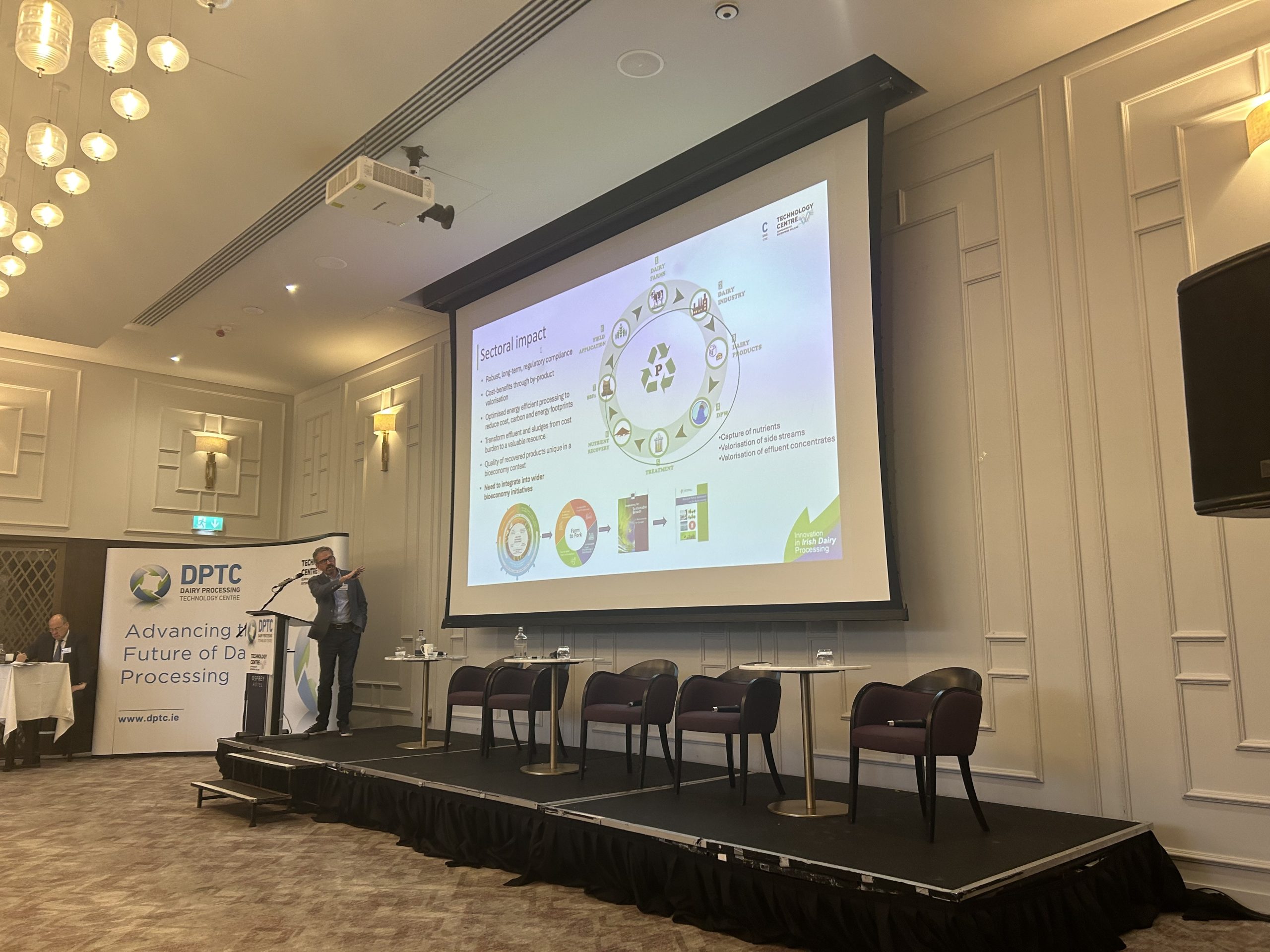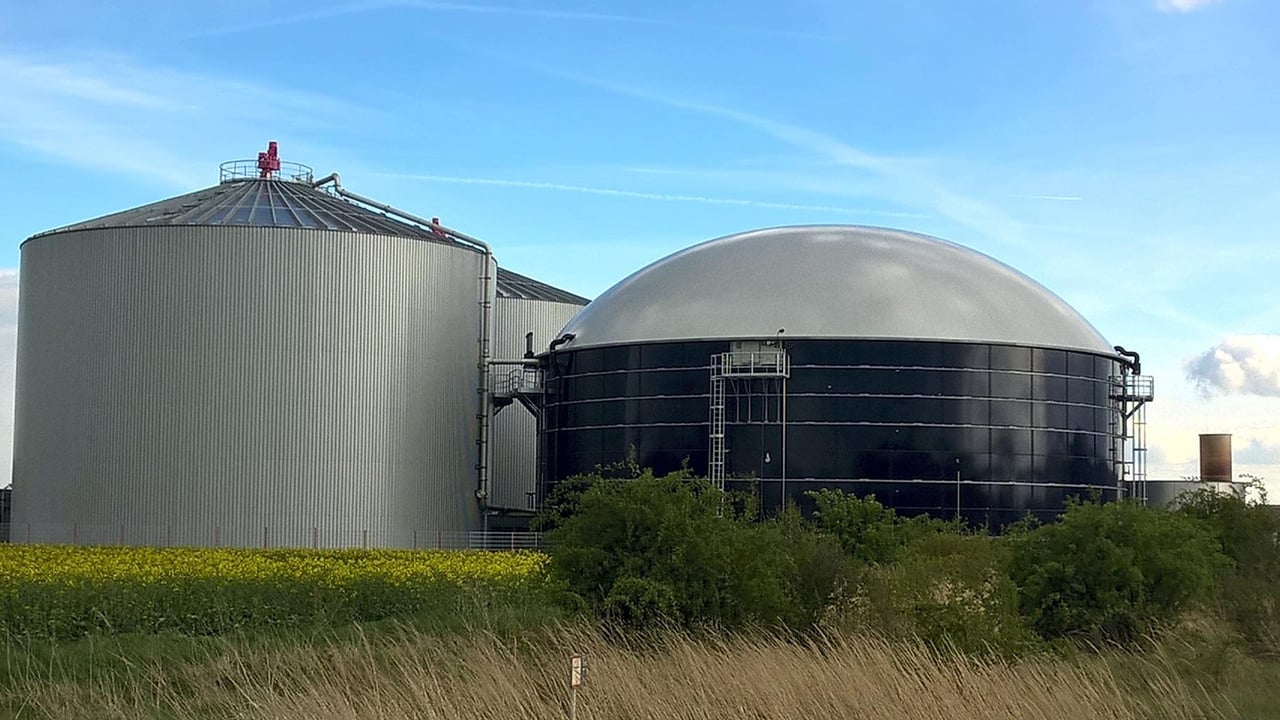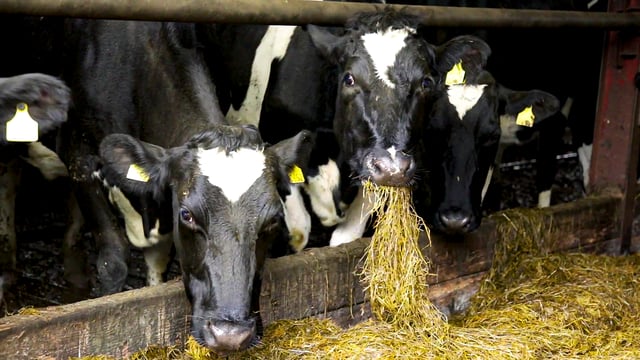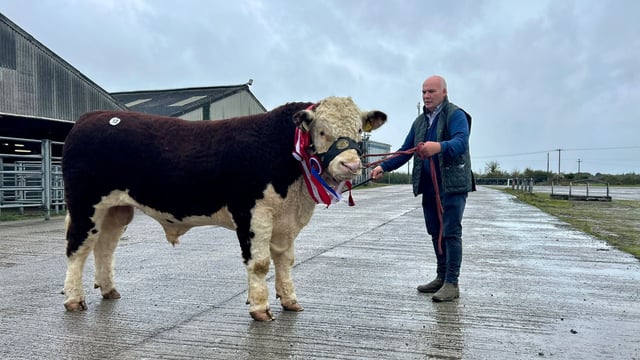Watch: Mulvihill on why 'slurry is not a pollutant'
Exploring the "potential" for slurry and the prospects for turning slurry and feedstocks into a value-added product was a key focus of a summit that brought together industry leaders, researchers, policymakers, farmers and innovators.
Creating a circular bioeconomy for the dairy industry and decarbonising the Irish dairy sector while supporting sustainable food systems was the major theme of Dairy Processing Technology Centre (DPTC) summit.
Director of Dairy Industry Ireland, Conor Mulvihill, spoke to Agriland at the summit on Thursday, October 24, and expressed his thoughts on how Ireland needs to move towards a bioeconomy to guarantee opportunities for a sustainable future.
The DPTC feels that a circular bioeconomy is a key pathway to achieving these decarbonising and sustainable food system goals throughout the supply chain.
One thing that the dairy industry continues to do, is add value to its product, and as Mulvihill pointed out, whey used to be a waste product, and is now an essential product for many markets worldwide.
It was highlighted that the sector needs to continue this adaption, through valorisation and integration to feed into the bioeconomy and to reuse and restore the valuable nutrients and energy that we produce on farm level.
The Minister of State at the Department of Agriculture, Food and the Marine, Martin Heydon said that the sector needs to continue adding value to their systems while "addressing key sustainability challenges".
Anaerobic digestion (AD) was at the helm of conversation, which is the conversion of feedstock by micro-organisms in the absence of oxygen into biogas and digestate.
This biogas can be upgraded to biomethane, which can be used for injection into the national gas grid, but before injection into the grid, biogas has to undergo further upgrading to remove CO2 and other trace gases.
The digestate is the solid form that comes back from the process and can be used to spread back on the land and is a fertiliser containing all nutrients and micronutrients necessary to grow grass.
Prof. Vincent O'Flaherty highlighted the sectoral impact of a circular bioeconomy, which were as follows;
- Robust and long-term solution;
- Cost-benefits through by-product valorisation;
- Optimised energy efficient processing to reduce cost, carbon and energy footprints;
- Transform effluent and sludges from cost burden to valuable resource;
- Quality of recovered products unique in a bioeconomy context.

Mulvihill told Agriland that "there's a lot on peoples table at the moment, everyone is talking about the nitrate directive and I think circular economy is well down the list".
However, Mulvihill feels that in the long-term, we have to take it seriously and said that "biomethane, slurry, and what we are going to do with that manure has to be looked at".
Speaking about the opportunity that AD plants and biorefinery can bring to the table, Mulvihill mentioned that "it would bring extra income streams for every type of farmers".
Mulvihill continued: "There is this perception that slurry is a pollutant, but there is a huge potential for our slurry - it could potentially replace a lot chemical N (nitrogen), provide new fertiliser streams and provide energy to decarbonise our co-ops."
The Dairy Industry Ireland director said that in order for this to happen, we need to "find a win-win for both co-ops and farmers and to see how we can leverage this into another good news story", as he mentioned that Denmark has halved their energy coming form biomethane.
Speaking about policy incoherence around the matter, Mulvihill said: "We need proper direction and we need proper funding for farmers and businesses to grasp this."
The government has allocated €40 million worth of funding in this year's Budget, but Mulvihill said that this funding is only enough to kickstart the process.
"We need to direct it into a good pilot project", Mulvihill added, as he fears that an "industry based on subsidy alone is not going to work".
Prof. of Dairy Production in University College Dublin (UCD), Karina Pierce ,spoke of the benefits of green biorefinery at the UCD Lyon's farm.
Prof. Pierce told attendees that the biorefinery looked beyond the dairy farmer, as it applied to anyone who can grow grass, as the process took the grass in to produce press cake as replacement for silage and also produced press juice.
The press juice could then be used as a protein concentrate for pig feed, fructo-oligosaccharides for food, or a nutrient rich whey, which could be used for fertiliser or bioenergy.
The professor told attendees that the process was impressive and it worked on both ends, as it returned value to the farmer but eluded back to the fact that circular bioeconomy was not the issue at the top of the pile at the moment.





